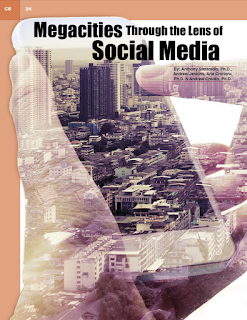Readers of this blog might be interested in the following position.
Tenure-Track Assistant Professor, Computational Social Science
The George Mason University Computational and Data Sciences (CDS) Department in the College of Science invites applicants for a full-time, tenure-track faculty position at the Assistant Professor level.
Responsibilities:
Beginning Fall 2016, this position is intended to primarily support the Computational Social Science (CSS) Program within CDS, including support of the Ph.D. degree in CSS, a master’s degree in interdisciplinary studies, and a CSS certificate. This position will also support undergraduate programs that are currently under development.
Qualifications:
Potential for success in both research and teaching are the primary criteria for this position. Applicants should have a promising research record, with a deep knowledge of and interest in computation as applied to one or more of the social sciences. While we are open to expertise in all areas of computational social science, we are particularly interested in social network specialists interested in both theory and data. Applicants must have a Ph.D. (expected completion by August 2016 is acceptable) from an accredited institution.
About the Program:
Methodologically, the CSS Program focuses on data-driven social science models using social network and agent-based computational approaches from a complexity perspective. Current faculty members have domain expertise in economics and finance, political science and international relations, geography and geographic information systems, land use and cover change, and public policy. As one of the first programs of its type in the world, CSS has had significant success in both research and professional placement. Our students come from all over the world (the Americas, Europe, Africa, Asia and Australia) and have been placed at a variety of top universities (e.g., University of Oxford, University College London), at government agencies, as well as in the private sector, including start-up companies.
More Information:
Continue reading »












































